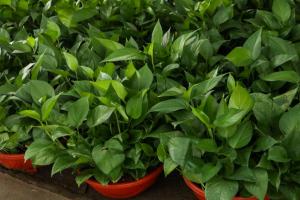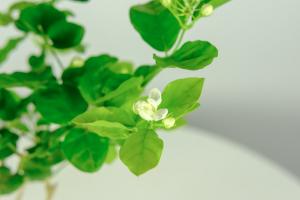How to Replant Potted Plants
Potted plants can add a touch of greenery and life to any space, whether it's indoors or outdoors. However, just like any other living thing, potted plants need care and attention to thrive. One of the most critical aspects of plant care is repotting. Although it might seem like a complicated process, replanting potted plants is relatively simple and can help your plants stay healthy and grow better. Here's how to do it:
Step 1: Choose the Right Time to Repot
The best time to repot plants is during their active growth season. During this time, the plant is preparing to grow, and its roots are actively taking up nutrients and water. As a result, repotting the plant at this time would disrupt its growth and could cause damage. Depending on your plant's growth cycle, this could be in the spring or summer months, but it's always best to check the plant's specific needs before repotting.
Step 2: Select the Right Potting Mix
Choosing the right potting mix is essential when repotting potted plants. The potting mix should be a well draining one, with a light texture. Potting mix that is too dense or heavy can keep the soil too moist, leading to root rot. On the other hand, a mix that is too light can dry out too fast and fail to hold moisture. Be sure to use good quality potting mix, which is usually a blend of peat moss, perlite, vermiculite, and/or other organic materials.
Step 3: Remove the Plant from its Pot
To remove the plant from its existing pot, turn the pot on its side and gently tap the pot's sides to loosen the soil around the roots. Then, carefully remove the plant by gently pulling it out. If the plant is tightly rooted in the pot, you can use a clean, sharp knife to loosen the roots. However, be careful not to cut through any roots.
Step 4: Loosen the Roots
Once the plant is out of the pot, inspect the roots. If they are tightly packed, you can use your fingers to gently loosen them. Take care not to pull too hard or damage any roots. This will encourage the plant to grow new roots and absorb more nutrients and moisture from the soil.
Step 5: Repot the Plant
Transfer the plant into the new pot, making sure it's centered and stable. Add enough potting mix to cover the roots but allow some space at the top of the pot for water. Gently tap the pot to settle the soil and remove any air pockets around the roots. Water the plant thoroughly, and be sure to check the soil moisture level regularly to avoid over or underwatering.
Conclusion
Repotting potted plants might seem like a daunting task, but with the right tools and precautions, it's a straightforward process that can benefit the health and growth of your plants. Remember to choose the right time, potting mix, and be gentle when loosening the roots. By following these simple steps, your potted plants will thrive and bring joy to your home or garden for years to come.

 how many times do yo...
how many times do yo... how many planted tre...
how many planted tre... how many pine trees ...
how many pine trees ... how many pecan trees...
how many pecan trees... how many plants comp...
how many plants comp... how many plants can ...
how many plants can ... how many plants and ...
how many plants and ... how many pepper plan...
how many pepper plan...































